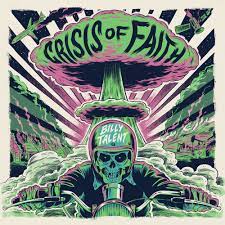Most people realize too late that they didn’t have backups of their data or don’t realize they can easily setup their own media servers at home. What do you use and suggest? Everything from beginner tech knowledge to advance. TIA
I have my important folders synced to my nextcloud and do nightly backups of that using borg.
I use Backblaze for all offsite backups
same here
Local I have trueNAS raid Z2 for photos/docs/home dirs/etc (backed up to backblase) and a zfs mirror for music/movies/etc not backed up
Same for me, Backblaze is the shit
There is no one size fits all for how someone should do their backups, it really depends on what you have and how much. What do I have? Over 100TB on a redundant unrais server with it backed up off-site. That’s probably overkill though. Most people would just benefit from an external hard drive with automated backups set up.
If you want to know it’s safe, the go to solution is 3-2-1. 3 total copies of your data across 2 different types of data storage, with one of them off site. That’s the only way to truly know your data is safe.
Are there certain brands of external hard drives you recommend for local backup?
The WD elements drives are pretty rock solid. The drives themselves are WD reds inside, which are very reliable. The only iffy thing is if the control board (the device that converts USB to the internal drive) can fail, but that’s true for any external. It’s my go-to backup solution.
theyre the drives i buy and shuck. Love me WD reds.
I have a Nas running nextcloud for general ease of automatically backing up anything important from my phone or pc.
Nextcloud and important things from the server are backed up using a tool called “restic” which honestly does not get enough mention here.
Restic is amazing, it supports just about every cloud storage provider out there - could be Amazon S3 or backblaze, but it could also be OneDrive or Google drive. If you’ve got some cloud storage somewhere, restic will probably support it.
Restic is super clever, it takes snapshots and only backs up any data that has changed - so it’s very space efficient and fast. I back up hourly, it only takes a few mins and if nothing has changed, there cost is also basically nothing. But you can pull back files from any snapshots you keep and when you delete a snapshot, it only deletes data that’s not used by any snapshot.
This means you can have backups going back months or years at very little data cost. You can restore a full backup, or just a specific file if you need.
Seriously, restic is amazing and more people need to know about it.
I’ll have to check it out. Restic sounds interesting.
Definitely do! It’s entirely command line driven, but don’t let that put you off, it’s quite easy to use and well thought out.
If that’s still a concern, there’s also backrest, a project that puts a web UI in front of restic:
Follow the 3-2-1 rule for all data you would be upset to lose. Having a server (really just any networked computer that can receive and store enough data) is the easiest way to accomplish “1” and “2”. Then encrypt and send that data offsite to either another server you maintain or to the cloud.
Is there a cloud service you recommend?
I recommend treating the cloud service as just a file host for one or more encrypted backup files/directories. If you do that, then you can use a huge range of hosts without worry.
A nice option is ab S3-compatible host. Whatever is reasonably cheap and well-liked. These hosts often allow you to keep two or more “versions” of your backups at free or reduced storage prices, which is a pretty great layer of added redundancy. They are also compatible with a ton of software tools.
I avoid listing the ones I personally use (I actually do 2 offsite copies) for infosec reasons.
- Pictures: On a folder on a server I syncthing to. I don’t really look at them. I used to have NextCloud for browsing them, but it was slow. I might give Immich a try
- Music: Youtube and the songs in my head. Sad, but it’s true. I have a large collection I rarely look at. I also have a rockbox I sometimes pick up and play to rejig my tastes.
- Movies/Tv shows: Kimcartoon was main goto for cartoons, but it’s down now. I use other sites. Movies, usually I find some recommendation on Lemmy and then I go find a nice DCC on an irc server somewhere with irssi. I had JellyFin for a bit, but I just don’t watch movies or series that often.
- Backups: Some in the cloud. Rest in a big old hard drive. Plug it in once a year, update and tidy it up. Power down, back into cold storage.
I use Onedrive for storing files offsite, and a Synology NAS for onsite. I’ve got my PC as the main source of my files, and use Syncthing to sync to my laptop and NAS, and Onedrive syncing the PC and NAS to the cloud.
I know Onedrive isn’t always popular here, but it does everything I need, and is cheap. It also lets me access my files from my phone
I’m all about keeping it simple with a NAS drive at home and cloud backups for that extra peace of mind. Having a local copy is great in case of internet issues, but the cloud is there for when disaster strikes. A mix like that gives you flexibility and quick access for your media needs!
Hard copy.
Photos in a photo album, documents in a filing cabinet.
Okay but like what if your house burns down
It’s good to have some kind of backup for worst case scenariosOtherwise I totally agree. I feel like the only way I’ll actually look at my photos is if they’re physically there for me to see.
This is why I’m scanning in all my old physical photos. It’s great to go through the originals, but if anything was to happen, they’d be gone forever.
What scanner do you use?
It’s an Epson Stylus, 235w I think. I’m not home to check at the moment. It’s not amazing, but it scans at up to either 1200 or 2400 dpi, and I usually use 600 dpi, as that’s more than enough for the typically low quality photos I’ve got.
I’m sticking with it on Windows for now too, as the software can do some corrections with one click, like certain colour corrections. I’ve tried a few Linux packages, and while they’re good, they’re all missing something compared to the Epson Windows software.
Local files, s3 sync on a 5 minute scheduled task to a glacier flexible retrieval bucket with versioning. Then I have an s3 sync app on my phone to make it all work like dropbox.
What’s the s3 app for your phone?
S3 xplorer
My setup is simple:
- Pictures: I don’t take many and rarely look at them tbh. So they just sit on my laptops NVMe
- Music: I only ever use cmus for listening to music => Therefore music is also only locally on my laptop, managed with beets
- Movies/Tv Shows: I have jellyfin running on a raspberry Pi 4. For single user use this works fine (even transcoding DVD quality works). For multi user or higher resolution transcoding this probably won’t work.
- Backups: One off-site backup at a cloud storage provider using restic and one backup on a USB hdd I simply plug in every other week.
My recommendation is: Keep it as simple as possible. In the past I created the craziest setups, but it turns out that in every day life I have neither the time nor motivation to maintain that shit.
ATM
Most of the files are local to my PC
Backed by Veeam to an SMB share.Anything else like videos, music etc. are on my media server
Raid is not a backup!
Double Parity is enough of an backup for files that are not important.
Reason why vacation pics are on my IP >_>
I’ve got a beginner 2 bay NAS set up with about 18TB for all my family’s media.
Pictures from our phones are also backed up in Google Photos. Not private at all but it works as an off site option.
Photos are stored in iCloud but originals of every photo is kept on both my iPhone and Mac. Plex library, it is stored with Unraid Parity, and additionally I’ve got all the magnet links in one spreadsheet.
Edit: oh no, downvote! Why?
OWC Express 4M2 with four 8TB m.2 chips raided for 24TB of lightning fast storage for media. And a Synology DS1522+ with expansion bay for 96TB of storage for backups plus more media (plex library to stream to home theater). Additional backups to 8TB SSDs for the builtin storage of my main machine. This is somewhat excessive, not what I recommend for most users, but definitely right for my use.
Everyone should have minimum two backups. Ideally three with one of them being offsite in case of disaster such as fire.
Offsite backup is not optional for anything important. It’s worth paying for AWS or literally any other online storage solution for that copy. You don’t want a natural disaster to lead to the loss of all your life’s photos for example.
I also personally don’t recommend doing your own software for anything related to backups, you can’t test edge cases easily and it could easily lead to loss of data. I once used an app that attempted to manage its own backups delete it’s online backup when it lost its local data as it attempted to back up the blank local data.














